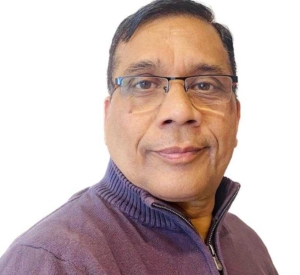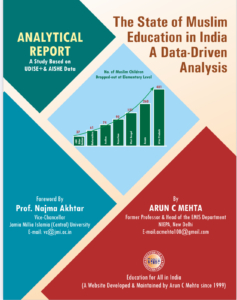Teacher Capacity Building: Progress, Challenges, and Pathways Under NEP 2020
Introduction
Education is the bedrock of societal and economic progress, equipping individuals with the skills and values needed to navigate a dynamic world. The National Education Policy (NEP) 2020 underscores the pivotal role of teachers in this ecosystem, emphasizing robust training and professional development to meet diverse learning needs. The 368th Report of the Department-related Parliamentary Standing Committee on Education, Women, Children, Youth and Sports, presented on August 8, 2025, evaluates the functioning of the National Council for Teacher Education (NCTE) and initiatives to enhance teacher capacity in alignment with NEP 2020. Drawing from the report, Unified District Information System for Education Plus (UDISE+) data, and insights from the Samagra Shiksha Abhiyan (SSA), this article examines achievements, challenges, and unfinished tasks in teacher education, focusing on government schools. It addresses pupil-teacher ratios (PTR), single-teacher schools, teacher shortages, contractual hiring, and NCTE’s regulatory role, proposing actionable solutions to achieve universal school education by 2030.
Review of the Report and Key Issues
The 368th Report, spanning 89 pages, provides a detailed assessment of NCTE’s role in teacher education and NEP 2020’s implementation, supported by inputs from the Department of School Education and Literacy (DoSEL), educationists, and civil society organizations. Below, we outline the major findings, recommendations, achievements, challenges, unfinished tasks, state-specific issues, and SSA provisions, integrating UDISE+ data for empirical rigor.
Shortage of Teachers at Elementary and Secondary Levels of Education in India: 2021-2024
Shortage of Teachers in School Education in India: Myth or Reality
Impact of Artificial Intelligence on Teacher Shortages in Education by Bill Gates
Major Findings
The report identifies critical insights into the state of teacher education and its alignment with NEP 2020:
- Teacher Shortages and Vacancies: Approximately 10 lakh teacher posts are vacant nationwide, with 7.5 lakh at the elementary/primary level. UDISE+ data highlights persistent vacancies, particularly in government schools like Kendriya Vidyalayas (KVs) and Navodaya Vidyalayas (NVs), with 30-50% posts unfilled. This undermines the Right to Education (RTE) Act 2009’s mandate for adequate staffing.
- Prevalence of Contractual Hiring: No permanent appointments have been made in NCTE since 2019, with reliance on contractual staff (89 appointments from 2019–2025). Similarly, contractual and para-teachers dominate in SSA-funded schools, violating constitutional reservation provisions for SC, ST, OBC, EWS, and PwD.
- Single-Teacher Schools and PTR Issues: Single-teacher schools constitute 15–20% of primary institutions, and some schools operate without teachers, contravening RTE norms. The PTR often exceeds the NEP target of 30:1, particularly in rural government schools, where it can reach 40:1 or higher.
- Engagement in Non-Academic Activities: Teachers are frequently diverted to non-educational tasks (e.g., census, elections), reducing instructional time and impacting quality.
- NCTE’s Staffing Crisis: As of June 15, 2025, NCTE faces 54% vacancies in Group A, 43% in Group B, and 89% in Group C posts, hampering its regulatory capacity.
- State-Specific Disparities: States like Bihar and Uttar Pradesh report over 2 lakh vacancies each, while southern states like Kerala and Tamil Nadu perform better in PTR and training infrastructure. Private Teacher Education Institutions (TEIs), comprising 92% of 16,000 TEIs, raise concerns about commercialization.
- Progress in NEP 2020 Implementation: Initiatives like the Integrated Teacher Education Programme (ITEP), National Professional Standards for Teachers (NPST), and National Mission for Mentoring (NMM) have been launched, with digital platforms like NCTQ enhancing monitoring.
- UDISE+ Trends: Enrollment has stabilized, with primary GER at 103.4% in 2022-23, but secondary dropout rates remain high (14.1% in 2023-24), indicating gaps in teacher quality and availability. However, primary GER declined to 93% in 2023-24 and Hr. Secondary GER is still low at 56.2% .
Achievements Post-NEP 2020
NCTE and DoSEL have advanced several NEP 2020 objectives:
- ITEP Implementation: The 4-year ITEP, a dual-major degree integrating education with subjects like arts or science, was introduced with admissions via the National Common Entrance Test (NCET) on April 29, 2025. Specialized ITEPs (e.g., Physical Education, Yoga) align with NEP’s multidisciplinary vision.
- NPST and NMM: Launched on March 9, 2024, NPST sets clear teacher competencies, while NMM fosters mentoring through a pool of senior educators. Braille and audio versions released on July 29, 2024, enhance inclusivity.
- Digital Integration: The National Centre for Teacher Quality (NCTQ), an NDEAR-compliant platform, monitors NPST and NMM, supported by SSA-funded DIKSHA and SWAYAM for CPD.
- Regulatory Reforms: NCTE’s 2014 Regulations are being revised to incorporate NEP recommendations, mandating Performance Appraisal Reports (PARs) for TEIs. PARs for 2018–19, 2020–21, and 2021–23 ensure accountability.
- Enrollment Gains: UDISE+ data shows a rise in GER from 2012-13 to 2023-24 (e.g., secondary GER from 73.6% to 77.4% and Higher Secondary from 45.4% to 56.2%), reflecting improved access partly due to teacher training reforms. However, enrolment, specially primary enrolment is not free from steep fluctuations.
| Year | Primary GER (%) | Upper Primary GER (%) | Secondary GER (%) | Higher Secondary GER (%) |
|---|---|---|---|---|
| 2012-13 | 103.4 | 89.3 | 73.6 | 45.4 |
| 2023-24 | 93.0 | 89.7 | 77.4 | 56.2 |
Challenges and Unfinished Tasks
Despite progress, systemic challenges persist:
- Persistent Vacancies: The 10 lakh approx teacher vacancies, particularly 7.5 lakh at elementary levels, have worsened due to retirements/attrition and lack of permanent recruitment. KVs and NVs rely heavily on contractual teachers, undermining quality and equity.
- Single-Teacher Schools and Schools Without Teachers: These violate RTE Act 2009, affecting learning outcomes in rural areas. The report notes no significant reduction in such schools; this is despite the regulatory agencies such as NCPCR put in the place.
- Contractual and Para-Teachers: Widespread use in states like Bihar and Uttar Pradesh bypasses reservation norms, impacting SC/ST/OBC representation.
- Non-Academic Duties: Teachers’ diversion to administrative tasks reduces classroom time, a concern raised by civil society.
- NCTE’s Capacity Constraints: High vacancies within NCTE (e.g., 54% in Group A) limit its ability to enforce standards or conduct surveys.
- Commercialization of TEIs: With 92% of TEIs privately run, substandard institutions persist, despite NEP’s call for closure by 2030.
- Incomplete ITEP Rollout: Full transition to 4-year ITEP by 2030 remains a challenge, with only 600 government-run DIETs available for training.
- State-Level Gaps: Northern states lag in TEI infrastructure and teacher recruitment, while southern states show better compliance.
Unfinished tasks include closing substandard TEIs, fully implementing ITEP, and integrating vocational education into teacher training curricula.
Recommendations from the 368th Report
The Parliament Standing Committee through its 386th Report provides actionable recommendations to address these challenges:
- Filling NCTE Vacancies: NCTE must fill Group A (54% vacant), B (43%), and C (89%) posts by March 31, 2026, to enhance regulatory capacity.
- Permanent Recruitment in Schools: DoSEL should ensure regular teacher appointments in KVs, NVs, and SSA-funded schools by March 31, 2026, stopping contractual hiring to uphold reservation norms.
- Addressing SSA Vacancies: DoSEL should withhold SSA salary funds from states failing to fill vacancies with permanent teachers, ensuring compliance with RTE.
- Stopping Contractual Hiring: Cease appointing para-teachers and guest teachers in SSA schools to align with constitutional reservation provisions.
- Reducing Non-Academic Duties: NCTE should issue guidelines to limit teachers’ engagement in non-educational tasks, prioritizing pedagogy.
- State-Level Coordination: DoSEL must work with states like Bihar and Uttar Pradesh to address high vacancies and improve TEI infrastructure.
- Mission Recruitment: Follow up on DoSEL’s January 23, 2025, directive to NCTE for a staff assessment and implement Mission Recruitment to fill all vacancies.
Provisions in Samagra Shiksha to Resolve Unfinished Tasks
SSA, launched in 2018, integrates RTE and NEP 2020 goals, offering provisions to address teacher education challenges:
- Teacher Training and CPD: Funds strengthen DIETs and BITEs for pre-service and in-service training via NISHTHA, DIKSHA, and SWAYAM. This can upskill para-teachers and support ITEP rollout.
- Recruitment Incentives: SSA’s salary component can be linked to permanent hiring, with funds withheld for non-compliant states, as recommended.
- Infrastructure Support: Investments in TEIs and scholarships for ITEP candidates can attract quality educators and reduce vacancies.
- Monitoring via PABs: Project Approval Boards can enforce PAR compliance and track recruitment, addressing single-teacher schools and teacherless schools.
- Equity Measures: SSA supports inclusive education for PwD and marginalized groups, ensuring reservation norms are met through permanent hires.
These provisions can accelerate ITEP implementation, close substandard TEIs, and reduce non-academic burdens by funding dedicated administrative staff.
NCTE’s Role in Addressing Specific Issues
As the regulatory body under the NCTE Act, 1993, NCTE’s responsibilities include:
- Single-Teacher Schools and Schools Without Teachers: Enforce minimum staffing norms through revised 2025 Regulations and mandate TET/CTET for all hires. NCTE can conduct surveys to identify and address such schools.
- Contractual/Guest Teachers and Para-Teachers: Withdraw recognition from TEIs producing unqualified teachers and recommend permanent hiring to states, aligning with SSA funds.
- Non-Academic Activities: Issue guidelines to prioritize teaching, limiting diversions to administrative tasks.
- Teacher Shortages: Use Section 12 powers to advise governments on HR plans, integrating with SSA’s recruitment drives and NCTQ’s monitoring capabilities.
State-Specific Issues and UDISE+ Insights
- Bihar and Uttar Pradesh: Over 2 lakh vacancies each, high reliance on para-teachers, and secondary dropout rates high in 2023-24. Weak TEI infrastructure exacerbates shortages.
- Kerala and Tamil Nadu: Better PTR (closer to 30:1) and training facilities, but private TEI dominance remains a concern.
| Heads | 2023-24 Sanctioned | 2023-24 Vacant | % Vacant | 2024-25 Sanctioned | 2024-25 Vacant | % Vacant |
|---|---|---|---|---|---|---|
| Elementary | 48,04,908 | 7,24,174 | 15.07 | 45,46,395 | 5,72,682 | 12.60 |
| Secondary | 15,21,299 | 2,34,974 | 15.45 | 24,39,365 | 4,09,980 | 16.81 |
| Total | 63,26,207 | 9,59,148 | 15.16 | 69,85,760 | 9,82,662 | 14.07 |
| Year | Secondary Dropout Rate (%), UDIse+ |
|---|---|
| 2020-21 | 14.6 |
| 2023-24 | 14.1 |
Concluding Observations
The 368th Report highlights NEP 2020’s transformative potential in teacher education through ITEP, NPST, and NMM, yet systemic challenges- 10 lakh vacancies, single-teacher schools, and contractual hiring- threaten RTE and NEP goals. NCTE’s staffing crisis and private TEI dominance further complicate reforms. SSA’s provisions for training, recruitment, and monitoring offer a robust framework to address these gaps, but state-level disparities require targeted interventions. The Committee’s recommendations for permanent hiring, stopping non-academic duties, and leveraging SSA funds are critical to achieving universal education by 2030. NCTE must strengthen its regulatory oversight to enforce standards and ensure equitable, quality education in government schools.
Suggested Readings
- National Education Policy 2020. Ministry of Education, Government of India.
- UDISE+ 2023-24 Report: School Education in India.
- Mehta, A. C. (2024). Analysis of UDISE+ 2021-22, 2022-23, and 2023-24. Education for All in India.
- Parliamentary Standing Committee Report No. 368 (2025). Rajya Sabha Secretariat.
- Samagra Shiksha Abhiyan Framework (2018). Department of School Education and Literacy.


